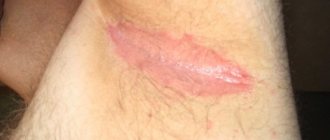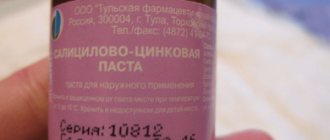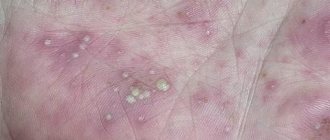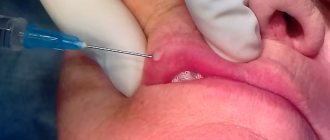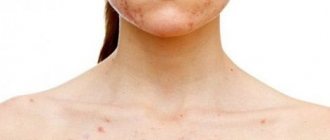Skin allergies occur quite often in both adults and children. The causes of skin allergies are different, but in each case there is an allergen, under the influence of which an allergic reaction occurs.
To successfully combat the disease, at the first stage it is necessary to eliminate or weaken the effect of the allergen on the body. The second and main stage of treatment involves the use of tablets and products for external use in the form of gels and ointments.
Key points in treatment
Regardless of the cause of the allergic reaction, treatment should be comprehensive and include:
- avoiding contact with allergens;
- limiting foods that increase the risk of allergies - citrus fruits, chocolate, milk, etc.;
- elimination of excessive physical and mental stress;
- limiting the impact of irritating factors on the body - hypothermia, overheating, etc.
In most cases, the following are allergens:
- medications;
- pollen of flowering plants;
- ultraviolet radiation;
- cold;
- house dust mites;
- molds;
- animal hair;
- food products – nuts, citrus fruits, milk, seafood;
- insect bites;
- cosmetics;
- household chemicals.
Which is best for:
Manifestations on the skin
Such symptoms of allergic reactions are a consequence of pathological disorders in the human body, therefore, to eliminate them, not only local remedies, but antihistamines are used.
Today, to combat skin allergies, doctors usually prescribe second or third generation drugs.
It is worth considering that second-generation drugs have a toxic effect on the cardiovascular system, so they are contraindicated for many people.
At the same time, third-generation drugs, which contain octavegil, do not cause drowsiness and do not lead to disturbances in the functioning of the heart.
The most effective means for topical use are hormonal drugs. They are produced in the form of ointments or creams based on corticosteroid hormones.
Photo: allergic spots
Reactions to food allergen
If an allergic reaction to a food product occurs, it is recommended to take a sorbent - white coal or enterosgel.
After that, calcium gluconate will help eliminate the manifestations of food allergies, which will cope with the swelling of the mucous membranes.
Subsequently, the doctor will decide on the use of antihistamines or hormonal drugs.
Cromones, which are used to stabilize mast cell membranes, can be an auxiliary agent.
Photo: rash on food
To the dust
This allergy manifests itself in the form of rhinitis, for the treatment of which antihistamine nasal drops are used.
In severe cases, when prerequisites for the development of bronchial asthma appear, inhalers may be required to eliminate bronchospasm.
For this purpose, saltos or salbutamol are used.
Photo: reaction to dust
La-Cri products and their help in fighting rashes
In addition to medications prescribed by your doctor to treat drug rashes, you can use La Cree Cream for Sensitive Skin. Its use helps reduce the intensity of rashes, redness and skin itching. Due to the fact that the product contains such active ingredients as string, licorice, violet and walnut extracts, as well as panthenol and bisabolol, the cream has a pronounced anti-inflammatory, regenerating, antipruritic effect. Since La-Cree Cream for sensitive skin does not contain hormones, it can be used for a long time.
List of allergy medications by group
Since allergies are the result of serious disturbances in the functioning of the body, its treatment must necessarily be comprehensive.
Therefore, various groups of drugs are used to treat this pathology.
Antihistamines
The mechanism of action of such drugs is to block receptors that respond to histamine, which is the main mediator of allergic inflammation.
Currently, allergists usually prescribe third-generation antihistamines, which are highly effective, do not cause drowsiness, and do not have a negative effect on the heart.
The most effective drugs from this group include:
- cetirizine;
- Telfast;
- fexofenadine.
Hormonal
Hormonal drugs based on corticosteroids are considered to be quite effective remedies for allergies. They can have systemic or local effects on the body.
Corticosteroids lead to a decrease in the production of inflammatory mediators and inhibit the process of their release from mast cells and basophils.
For the treatment of allergic dermatitis, special ointments based on such hormones are used.
This group of allergy medications includes:
- clenched;
- flixonase;
- sinaflan.
Cromony
This group of allergy medications is used to stabilize mast cell membranes.
These drugs usually have no side effects, but they are not considered as effective as corticosteroids.
Therefore, cromones can be used for mild manifestations of allergies as an adjuvant therapy.
This category includes the following drugs:
- ketofifen;
- Tailedmint;
- undercromed.
Homeopathic
Such drugs are usually prescribed to people with seasonal allergies. Homeopathy is also suitable for treating the cold form of the disease.
However, it is worth considering that therapy with such drugs should last quite a long time - 6-8 months.
In addition, you should not take homeopathic medicines at the initial stage during an exacerbation of allergies.
The choice of a specific remedy depends on the form of the disease.
There are quite a few homeopathic remedies:
- apis mellifica;
- euphrasia;
- histaminum.
Photo: Apis mellifica
What is skin allergy
Allergy is the increased sensitivity of the human body to various external irritants.
However, the appearance of such sensitivity is explained by a person’s lifestyle, the presence of bad habits (not only alcohol and smoking), poor lifestyle choices, and so on. In essence, allergies are a kind of payment of modern man for the development of industry and the destruction of the environment.
The main task of antihistamines is that they reduce toxicity, reduce muscle spasm, and also prevent the development of edema. Unlike tablets, ointments have fewer contraindications and possible side effects.
The pathogenesis of any type of allergy develops according to the same scenario. Essentially, this is the body’s immune response, but enhanced several times. The allergy mechanism consists of 2 stages:
- phase of the early immune response - when an allergic pathogen appears, IgE plasma cells are produced and bind to the receptors of mast cells and basophils. When the allergen reappears, IgE is reactivated, which serves as a signal for the synthesis of histamine and other inflammatory mediators - interleukin, cytotoxin. Substances entering the surrounding tissue cause contraction of the smooth muscles of the walls of blood vessels, irritate nerve endings, increase mucus secretion, and so on. Externally, this manifests itself as itching, sneezing, runny nose, rash and swelling of the skin;
- the late response phase is caused by the accumulation of leukocytes, neutrophils, lymphocytes at the site of suspected inflammation, and the body perceives such a reaction as a signal of inflammation. Under their influence, functional tissue is gradually replaced by connective tissue, which has a very negative effect on the condition of organs. The second phase, as a rule, appears 4–6 hours after the first and lasts 1–2 days.
The localization of rashes varies. When exposed to external irritants, the areas in contact with the allergen are the first to suffer; when the pathogen enters the body through the respiratory tract or through the digestive tract, any part of the body can be affected.
Antihistamines are designed to reduce the toxicity of histamine, reduce muscle spasm, prevent the formation of edema, and alleviate the patient’s condition. The latest generation of drugs have fewer side effects and act selectively on the cause of the allergic reaction.
Release forms. Their pros and cons
Currently, there are many options for treating allergies - the choice of a specific form of medication depends on the type and severity of the disease.
Pills
The most optimal way to eliminate allergy symptoms is to use antihistamines in tablet form.
They are convenient to carry with you, and therefore a person can independently help himself at the first signs of illness.
Although such remedies are quite effective, treating allergies with tablets has many disadvantages:
- drowsiness;
- constipation;
- dry mouth;
- visual impairment.
The exception is third generation drugs - cetirizine, desloratadine.
Such drugs are usually used for allergic rhinitis, conjunctivitis, and skin itching.
Drops
Conjunctivitis and rhinitis of allergic origin require the use of special drops.
The principle of their action is based on the narrowing of blood vessels, which allows you to cope with nasal congestion, remove swelling and hyperemia of the eyes.
Eye drops include medications such as:
- opatonol;
- lecroin;
- azelastine.
Nasal agents may have a vasoconstrictor and antihistamine effect.
Thanks to the use of such drugs you can:
- eliminate mucous discharge from the nose;
- restore nasal breathing;
- cope with itching and sneezing.
You can use products such as sanorin-analergin, vibrocil. Zyrtec drops are used simultaneously for the eyes and nose.
The disadvantage of some products is their ability to increase irritation of the mucous layer - this, in particular, applies to drops such as cromosol and cromoglin.
Sprays
Nasal allergy sprays are used to improve the condition of the mucous membranes of the nasal cavity.
However, they are prohibited for use in case of problems with heart rhythm or drop in blood pressure.
The advantage of such drugs is that they have a local effect and do not enter the general bloodstream. This significantly reduces the number of side effects.
Popular allergy sprays:
- tetrizoline;
- naphazoline;
- xylometazoline.
To block histamine, drugs such as:
- astemizole;
- loratadine;
- cetirizine
If such remedies do not produce the desired results, your doctor may prescribe glucocorticoid sprays:
- nasonex;
- tafen;
- nasal.
Ointments and creams
Drugs that have an antihistamine effect are produced in the form of ointments, creams, gels or pastes.
Their use allows you to eliminate external signs of allergies - swelling, itching, rashes, peeling of the skin.
Ointments contain active substances dissolved in the base. Due to its high efficiency, this is the best remedy for the treatment of chronic allergies, since it is this that is accompanied by the presence of subcutaneous seals.
Other types of external preparations contain insoluble substances. For weeping and irritated skin, creams are used, while for more significant disorders, emulsions are indicated.
In this case, all ointments and creams are divided into hormonal and non-hormonal.
The first category includes very effective drugs - flucinar, hydrocortisone, advantan.
Their main disadvantage is a large number of side effects - in particular, suppression of the adrenal cortex.
Non-hormonal drugs - bepanten, fenistil, radevit - have no contraindications and are widely used to treat allergies.
Injections
Similar procedures are used if the allergy develops instantly - this could be Quincke's edema or anaphylactic shock.
Thanks to the intravenous or intramuscular use of medications, allergy symptoms can be eliminated.
In severe cases, injections become the only way to save the patient’s life.
Inhalations
This type of allergy medication is used to treat bronchial asthma. Typically, inhalers contain hormones, sympathomimetics, and cholinergic receptor blockers.
These include:
- salbutamol;
- symbicort;
- formoterol
Treatment of medicinal urticaria using folk methods
Traditional medicine methods can act as an additional measure in the treatment of drug rash. However, we must remember that using exclusively “grandmother’s” recipes is unacceptable, as it can further aggravate the situation. Before using traditional medicine, consult your doctor.
What treatment options for medicinal urticaria does traditional medicine offer?
- If hives that appear after taking medications are accompanied by severe itching, you can reduce it with the help of grated raw potato gruel. The potato tuber should be washed and grated. The resulting paste is applied to the rash for 10-15 minutes, after which it is carefully removed. There is no need to wipe off the remaining potato juice.
- Baths with herbal infusions help relieve irritation and itching caused by medical urticaria. To prepare them, 1 tablespoon of dry herbs (chamomile, string, calendula or mint) is poured into 0.5 liters of boiling water and allowed to brew for half an hour. The resulting infusion is added to a bath with warm water.
- In the fight against skin itching caused by medical urticaria, propolis tincture helps well. It is recommended to wipe the affected areas of the skin with a cotton pad soaked in a 10% tincture.
- You can make lotions from nettle decoction. 1 tbsp. l. dry herbs pour a glass of water, bring to a boil and remove from heat. The resulting broth is cooled to room temperature, moistened with a clean bandage and applied to the rash.
Why does a doctor choose the best treatment drugs?
For allergy treatment to be effective, it is very important to make a correct diagnosis and identify the allergen. Only an experienced doctor can do this.
Independent use of antihistamines and other drugs for the treatment of allergies can lead to the development of dangerous complications, because many of them cause depression of the central nervous system and problems with the heart.
In addition, without adequate therapy, the list of allergens can expand significantly.
As a result, there will be a need to use stronger drugs that have many side effects.
Therefore, only a doctor should choose an allergy medicine that does not cause drowsiness.
Characteristic signs and symptoms
Doctors say that the skin is a mirror of the whole body. Therefore, if any rash is observed on the skin, this indicates that not everything is in order inside the body either.
Signs of skin allergies are divided into three types: mild, pronounced and severe forms of allergy.
Mildly expressed ones are characterized by the following manifestations:
- skin rash, usually small;
- slight swelling;
- the skin in the affected areas does not itch;
- Red spots appear in some areas.
All symptoms disappear immediately after taking the antiallergic drug.
Pronounced ones are characterized by the following manifestations:
- there is severe tissue swelling;
- blisters form on the skin;
- the rash becomes frequent and large;
- the skin begins to itch very much.
The severe form is characterized by the following manifestations:
- the rash covers a large area of the body;
- When opened, the blisters release fluid.
The severe form is derived from pronounced symptoms.
In this case, urgent medical attention and the introduction of a complex of drugs to relieve symptoms are required.
Skin irritation, redness, rashes, itchy areas are characteristic signs of many infectious and dermatological pathologies. People do not always turn to doctors on time, try to get rid of the problem using traditional methods, or use inappropriate ointments. Self-medication often blurs the picture of the disease and interferes with a quick and accurate diagnosis.
It is important to know how to distinguish itching due to allergies from skin diseases. The table shows the main differences in symptoms for scabies, rubella, chickenpox and diseases caused by contact with various types of allergens.
| Nature of itching, other reactions | Allergy | Skin diseases |
| Times of Day | Itching bothers you throughout the day | Itching worsens in the evening and at night |
| The Power of Negative Reaction | Symptoms improve after taking antihistamines | Allergy pills do not help with itching caused by rashes, irritation due to scabies, chickenpox, and rubella. Without antiviral and anti-scabies, the disease cannot be cured. Itching lessens as the patient recovers |
| Associated symptoms | Other allergy symptoms appear: sneezing, nasal congestion, watery eyes, tissue swelling, cough without sputum discharge | The temperature often rises, general weakness and drowsiness appear. With scabies, the passages made by the scabies mite are visible under the skin. With rubella and chickenpox, the rashes are itchy, pimples and red dots do not turn into blisters, and after applying local remedies they dry out quickly enough to form crusts. |
| Contagiousness degree | There is no danger to others: an allergy is an immune response to an irritant; pathogenic microbes and dangerous fungi are not found on the patient’s body | A high degree of spread of infection if a person does not have immunity (chickenpox, rubella). There are no vaccinations against scabies; there is a high risk of infection among family members if one person is diagnosed with a dangerous disease. |
Allergic dermatoses are diseases associated with a negative response of the body to plant pollen, certain types of food, toxic substances, and medications. Doctors identify many factors that provoke skin reactions in true and false allergies.
Many diseases due to hypersensitivity to certain substances are accompanied by itching, hyperemia, and rashes. Antihistamines for skin allergies quickly eliminate negative signs and prevent the appearance of new symptoms. Which classic and new generation products are most effective? The answers are in the article.
Expensive or cheap, is there a difference?
Cheap analogs of allergy medications usually have more side effects and do not always cope with the symptoms of the disease.
Most of them provoke drowsiness and disturbances in the functioning of the cardiovascular system.
Analogues differ from expensive drugs in the degree of purification, which is why their use causes negative health consequences.
More advanced products are slightly more expensive, but they do not have as many side effects.
Also, expensive medications are usually made more convenient to use and have a long shelf life.
In addition, such drugs need to be taken less often, which is also very convenient for the patient.
Review and characteristics of effective drugs
Among antiallergic drugs there are formulations with rapid and prolonged action, of different price categories and generations. The allergist will select the best option for each patient after studying the clinical picture, contraindications, taking into account age and past illnesses.
Levocetirizine
Peculiarities:
- effective new generation product;
- the manufacturer offers an antiallergic drug in the form of syrup, drops and tablets;
- the antihistamine effect is noticeable within 15–20 minutes after taking the drug;
- Levocetirizine does not require metabolism like cetirizine: this nuance explains the active and rapid effect on histamine receptors;
- the concentration of the active substance while maintaining the antiallergic effect lasts for a day or more;
- during pregnancy and lactation you should not use an antihistamine;
- main indications: allergic rhinitis, hay fever, allergic dermatoses, urticaria of various types;
- Estimated cost: 190 rubles.
Fenistil-gel
Peculiarities:
- the active ingredient of the antiallergic drug is dimentindene maleate;
- the drug is approved for use in children from 1 month;
- high antihistamine, antipruritic effect;
- the gel is easy to apply;
- Allergic itching quickly disappears, redness and swelling decrease;
- a positive result appears 25–60 minutes after treating the rash area;
- the average price is 380 rubles.
Claritin
Peculiarities:
- The third generation drug is considered one of the safest formulations for children and adults;
- syrup and tablets are prescribed as the main remedy to eliminate negative reactions in chronic allergies. Suprastin is more suitable for combating severe swelling;
- the drug is approved for course use, does not cause a sedative effect, a single dose is effective throughout the day;
- no cardiotoxic effect, does not penetrate the blood-brain barrier;
- prescribed to relieve itching, hyperemia, swelling, eliminate bronchospasm;
- Claritin syrup is suitable for babies from 12 months;
- does not affect psychomotor reactions, a short list of side effects and restrictions for use;
- Estimated cost - from 170 to 230 rubles.
Fexadine
Peculiarities:
- release form – suspension and allergy tablets;
- latest generation drug;
- there are few contraindications: individual sensitivity, age up to 6 years;
- negative symptoms decrease an hour after taking the composition;
- prolonged action – 24 hours;
- adverse reactions are rare;
- the maximum effect was observed in the treatment of urticaria, allergic dermatoses, hay fever;
- The estimated cost of the drug Fexadin is 290 rubles (120 mg of active ingredient) and 390 rubles (180 mg of active ingredient).
What is skin dyshidrosis and how to treat the allergic form of the disease? We have the answer!
How to get rid of cat allergies? Effective treatment options are described in this article.
Go to the address and find out effective methods of treating allergic blepharitis in adults and children.
Suprastin
Peculiarities:
- a first-generation drug with a large number of restrictions and quite toxic effects on the body is still prescribed to patients, despite the emergence of dozens of modern antihistamines;
- the reason for the demand for a classic antiallergic drug is the rapid relief of symptoms of severe types of allergies;
- Suprastin injections and tablets already after 10–15 minutes noticeably reduce swelling, against which suffocation develops, and prevent damage to internal organs during anaphylactic reactions;
- chloropyramine hydrochloride actively suppresses all phases of allergy, reduces the strength of the reaction, reduces the risk of complications due to Quincke's edema, generalized urticaria, anaphylactic shock;
- in case of dangerous signs, the minimum dose of the drug is prescribed even to babies under 12 months of age. Suprastin in ampoules helps with anaphylaxis;
- the effect lasts up to 6–8 hours, then you need to take a new portion of the drug;
- there are restrictions, neglect of which causes side effects;
- The drug Suprastin is inexpensive - from 120 to 150 rubles (injections and tablets).
Cetirizine
Peculiarities:
- the hydroxyzine metabolite actively relieves allergic reactions, acts delicately, and rarely causes adverse reactions;
- the drug Cetirizine is drops, tablets, antiallergic syrup;
- a noticeable improvement in the condition occurs 1.5–2 hours after taking the new generation drug, the effect persists throughout the day;
- An effective remedy for eliminating skin signs. A positive result was observed in the treatment of itchy dermatoses and urticaria;
- also, the drug Cetirizine eliminates redness of the conjunctiva, itching, and tearing of the eyes in allergic conjunctivitis;
- for maximum impact at the stage of allergic inflammation, 1 tablet per day is prescribed (for adult patients and children over 12 years of age). From 1 year of age drops are suitable, from 2 years of age - syrup;
- Cetirizine hydrochloride does not cause severe adverse reactions, the drug is well tolerated;
- average cost: drops - 260 rubles, tablets - from 50 to 140 rubles (10 and 20 pieces per package).
In case of skin allergies, negative reactions go away without the use of medications only at the initial stage of the disease, and then not always. To successfully combat negative symptoms and prevent relapses, it is necessary to take antihistamines. The doctor will select an effective drug taking into account the patient’s age, form and severity of the disease.
Antihistamines are divided into “old” and “new” generation drugs. How they work, how they differ from each other, in what cases they are prescribed, how they are used for skin allergies - you will learn about this and much more from the following video:
Features of application
There are certain recommendations and restrictions on the use of antiallergic drugs in different categories of the population.
During pregnancy
The development of an allergic reaction during pregnancy is accompanied by a fetal reaction, which manifests itself in the form of increased production of hydrocortisone, which reduces the manifestations of the inflammatory process.
Almost all allergy medications are contraindicated during pregnancy, as they negatively affect the development of the fetus.
The exception is tavegil, which is allowed in the second half of pregnancy.
If severe allergies or anaphylactic shock develop, injections of hormonal drugs are used, but this can only be done if there are strict indications.
Read how calcium gluconate helps with allergies. How to choose eye drops for allergies? Find out in this article.
In children
The child's body has certain characteristics that are associated with insufficient liver development.
That is why not all medications can be used to treat children.
In this case, topical agents and antihistamines are usually used.
Hormonal medications for internal use are not recommended, as they can change the functioning of the adrenal glands.
As a rule, medications such as:
- erius;
- Zyrtec;
- astemizole;
- terfenadine
In children under one year of age, allergies usually manifest themselves in the form of a reaction to food, which is accompanied by skin rashes.
Typically, local hormonal preparations are used for treatment and contact with the allergen is avoided.
Symptoms of drug rash
A feature of allergic manifestations is the fact that rashes, redness and other forms of symptoms can occur on any part of the body, and the size of the lesion and the duration of the reaction can differ significantly. In this case, the individual characteristics of the body and the strength of the allergic effect are taken into account. Doctors warn that self-medication can present the most unpleasant “surprises” in the form of side effects of drugs.
The rash may appear either after several hours from the start of taking the medications, or after a longer period, for example, the next day. According to the characteristics, the rash is distinguished by the strength and time of impact and the extent of the lesions:
- Maculopapular rash (measles-like). Allergies can be triggered by almost any medical drug, but most often this occurs when colds or infectious diseases are not treated correctly with the use of antibiotics. Starting from small spots, the allergy grows, resembling in appearance a symptom of measles rash or pityriasis rosea.
- Hives. It appears in the form of clearly defined blisters with swelling.
- Eel-like. The main difference from acne is the absence of comedones and suddenness, which in itself is also characteristic of an allergic manifestation.
- Mucocutaneous. They are observed in the form of rashes on areas of the oral cavity or skin in the form of small blisters and ulcerations. Side effects occur when taking antibiotics or during long-term treatment with several different types of drugs at the same time.
- Toxic necrolysis of the epidermis. It manifests itself in the form of lesions of large areas of skin with peeling of the epidermis, reminiscent of a burn. An extremely dangerous type of allergic drug rash, with frequent fatal outcomes due to inaction to treat the manifestation. In infants with a weakened immune system, a similar symptom is caused by a staphylococcal infection.
- Rashes due to photosensitivity. The appearance resembles a type of dermatitis, the rash occurs after exposure to direct sunlight.
- Exfoliative. An allergic type of drug rash, dangerous to health and life, manifests itself in the form of extensive detachment of the epidermis, against the background of thickening of large areas of the skin.
- Fixed rash. Red or dark purple rash with clear demarcation of the rash. This type of rash is usually observed when using a certain drug.
- Purple. Spots of red or bright purple color, the rash usually appears in the form of small dots that form large areas.
- Lichenoides. They appear as polygonal papules, in the form of scaly spots, which can merge, forming large areas of lesions.
Medicine rash in a child
Drug rash, which appears in children during treatment of diseases, is a type of protective reaction of the body's immune system. Manifestations in the form of a rash can occur for various reasons:
- Reduced immune system.
- Treatment with the same medications for a long time.
- Incompatibility of several medications used simultaneously.
- Hereditary factor.
Experts identify incorrectly selected medications as one of the main causes of an allergic reaction in the form of a rash to medications. Parents often decide to treat certain diseases without prior examination by specialists, choosing medications on their own, which leads to such adverse reactions.
What to do if you have a reaction to the medicine itself
If symptoms of an allergy to a drug appear, you should stop taking it and consult a doctor immediately.
The specialist will prescribe an examination, based on the results of which he will select effective treatment.
Often, allergies to medications appear in people who are prone to food reactions. In such cases, doctors advise sticking to a hypoallergenic diet.
As a rule, after discontinuation of the drug that provoked the allergy, all symptoms disappear. In this case, the doctor prescribes a safer medicine.
Find out if cheap allergy pills are worth buying. Looking for popular names of allergy nasal sprays? Follow the link.
What to do if you have an allergy on your face? Find out more.
Consumer Reviews
AverinaSv (irecommend.ru)
“I received this cream as a gift during pregnancy classes, two 15-gram tubes. Arriving home after giving birth, I began to sort out everything that should be at hand every day, put this cream in the organizer and forgot about it :).
Once again the local pediatrician visited us and, having examined the child, showed me a tiny red spot under the diaper, with the words “this is already irritation, we need to apply cream with zinc.” I reached into my organizer, pulled out all the creams I had, and our doctor, after carefully studying the ingredients, handed me a tube of La Cree - “This one!” The small red spot disappeared after just 2 treatments with this cream during the day. That is, firstly, this cream is really effective :)! Of course, for more serious cases it will take more time; we treated severe irritation with this cream for about 3 days.
I use this cream only when necessary, that is, when I notice irritation on my baby’s skin. And the first of the gift tubes is not over yet; in 2.5 months I still have more than half of it left. And this is the second plus, the product is economical :)”!
savinaIra (irecommend.ru)
“Probably every new mother worries about the health of her baby. Sometimes it gets to the point of absurdity, and only adequate words from my husband return me to a calm state. So, recently I noticed redness between the little one’s legs and got worried, so we went to the pediatrician.
It turned out that the diaper was rubbing and for good reason I needed to replace it with a larger size and buy cream. They prescribed us La-Cri (I really like this product, I already have several reviews about it). The price of all products is very reasonable, I bought it for 230 rubles.
What pleased me, as always, is the composition!! Everything is made from natural ingredients, fragrance-free and completely non-hormonal, which was very important to me! He completed his task 100%. The redness disappeared 3-4 days after use. I continue to use it, but for preventive purposes.
Another big plus for me is that the cream does not have any intrusive odor and it is simply washed off the skin the next time you wash the baby :).
My summary: This is a good cream that helps with diaper rash and can be used daily.”
Sources:
- Molochkova Yulia Vladimirovna, Dermatology. Brief reference book, GEOTAR-Media, 2020.
- Baumann Leslie, Cosmetic Dermatology. Principles and practice, MEDpress-inform, 2020.
- Ratner Desiri, Avram M.R., Avram M.M., Procedures in Dermatology. Clinical cosmetology, GEOTAR-Media, 2020.



